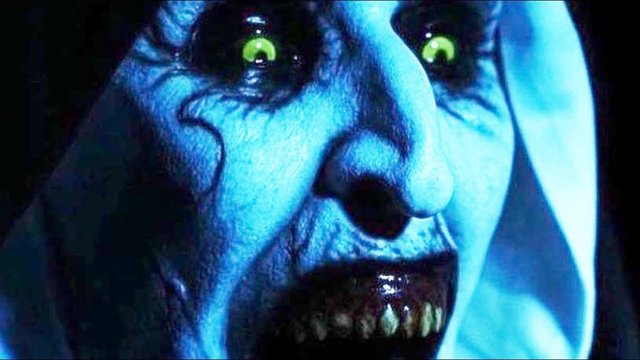
Horror fiction
Page issues
"Supernatural horror" redirects here. For the film genre, see supernatural horror film.
An Illustration of Poe's "The Raven" by Gustav Dore
An Illustration of Poe's "The Raven" by Gustave Doré
Horror is a genre of fiction which is intended to, or has the capacity to frighten, scare, disgust, or startle its readers or viewers by inducing feelings of horror and terror. Literary historian J. A. Cuddon has defined the horror story as "a piece of fiction in prose of variable length... which shocks or even frightens the reader, or perhaps induces a feeling of repulsion or loathing".[1] It creates an eerie and frightening atmosphere. Horror is frequently supernatural, though it can be non-supernatural. Often the central menace of a work of horror fiction can be interpreted as a metaphor for the larger fears of a society.
History Edit
Horror in ancient Greece and Rome Edit
Athenodorus and the ghost, by Henry Justice Ford, c.1900
Athenodorus
The genre of horror has ancient origins with roots in folklore and religious traditions, focusing on death, the afterlife, evil, the demonic and the principle of the thing embodied in the person.[2] These were manifested in stories of beings such as witchcraft, vampires, werewolves and ghosts. European horror fiction became established through works by the Ancient Greeks and Ancient Romans. In Greek mythology, Prometheus was a Titan who was the inspiration for the title of Frankenstein, or The Modern Prometheus. Prometheus' earliest known appearance is in Hesiod's Theogony.[3] However, the story of Frankenstein was influenced far greater on the story of Hippolytus. Asclepius revived Hippolytus from death. Euripides wrote plays based on the story, "Hippolytos Kalyptomenos" and Hippolytus.[4] Plutarch's "The Lives of the Noble Grecians and Romans: Cimon" describes the spirit of the murderer, Damon, who himself was murdered in a bathhouse in Chaeronea.[5] Pliny the Younger describes Athenodorus Cananites who bought a haunted house in Athens. Athenodorus was cautious since the house was inexpensive. As Athenodorus writes a book a philosophy, he is visited by an aberration bound in chains. The figure disappears in the courtyard; the following day, the magistrates dig up the courtyard to find an unmarked grave.[6]
Horror in the Medieval Era Edit
The establishment of Christianity in Rome was confirmed by the Edict of Milan in 313 A.D., and thus revolutionized the religious landscape of Europe. The revolt by the Goths, the Germanic believers of Gothic paganism, earned them a reputation amongst several early writers and their texts, such as Scriptores Historiae Augustae, Vita Gallienii.[7] The earliest recording of an official accusation of Satanism by the Roman Catholics took place in Toulouse in 1022 A.D. against a couple of clerics.[8] Werewolf stories grew in popularity in French literature of medieval France. Marie de France wrote one of the twelve lais as a werewolf story entitled "Bisclavret".
A Print of Vlad III
Vlad III
The Countess Yolande commissioned a werewolf story entitled "Guillaume de Palerme". Anonymous writers penned two werewolf stories, "Biclarel" and "Melion". Much of horror fiction derived itself from the cruelest faces in world history, particularly those who lived in the fifteenth-century. "Dracula" can be traced to the Prince of Wallachia Vlad III whose alleged war crimes were published in German pamphlets in the late Fifteenth Century. The 1499 pamphlet published by Markus Ayrer is most notable for its woodcut imagery.[9] The alleged crimes of the Giles de Rais were said to be the inspiration for "Bluebeard".[10] The vampiress is most notably derived from the real life noblewoman and murderess, Elizabeth Bathory. Elizabeth Bathory in popular culture helped usher in the emergence of horror fiction in the 18th-Century, such as through László Turóczi in his 1729 book, Tragica His